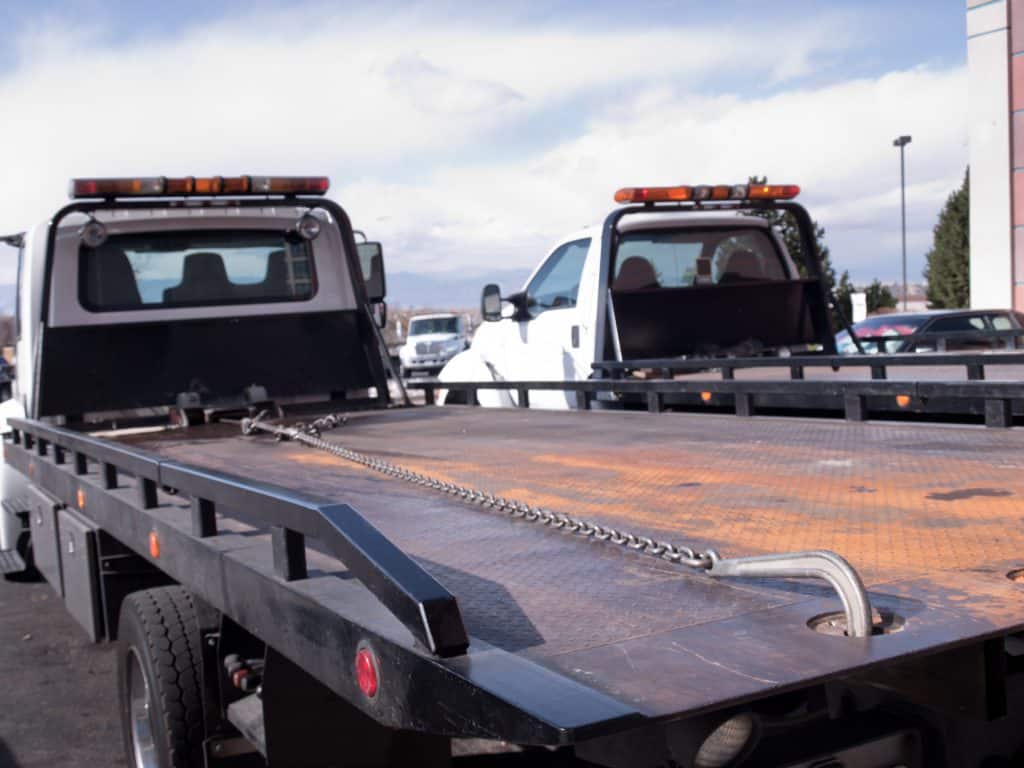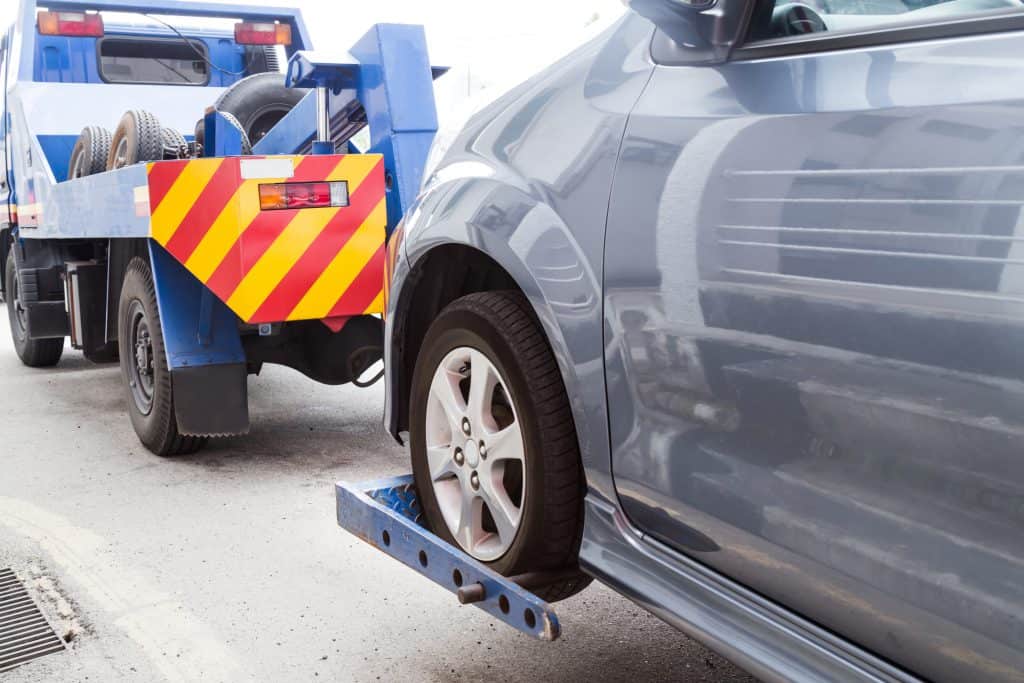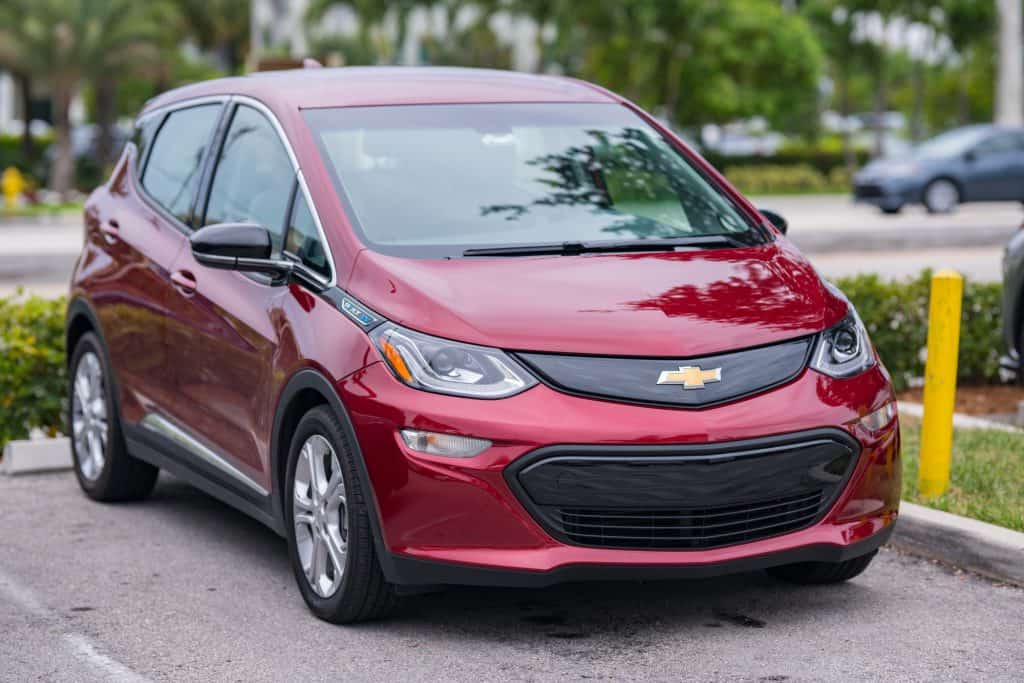Whether it’s due to your Chevrolet Bolt breaking down, running out of electric power, or if you’re planning on taking the Bolt along on vacation with you as a spare vehicle, the question of towing your Chevy Bolt is bound to come up sooner or later.
When it comes to electric vehicles and towing, there are always doubts and questions, but we will try to address some of these in today’s blog post. We’ll be focusing on the Chevy Bolt and asking two core questions:
- Can the Chevy Bolt be flat towed?
- Can the Chevy Bolt be towed at all?
Here are the short answers to both of these questions:
The Chevrolet Bolt cannot be flat towed, but it can be towed using a tow dolly that has electric brakes. This is how many people tow their Chevrolet Bolts behind their RV or motorhome. It is not, unfortunately, as simple as rigging the Bolt up to the dolly and getting on your way. There are some special steps to take because the Bolt is an electric car. We will explain them further below.
Why Can’t I Flat Tow My Chevrolet Bolt?
First of all, just about every electric car producer, including Chevrolet, recommends that you only tow your EV on a flat-bed trailer, or transport it directly on a flat-bed truck. If you were to break down at the side of the road, that’s the method the roadside assistance service would use to transport your car to the auto shop:

The other theory was that as long as the car can be left in neutral, then flat towing is possible because being in neutral disconnects the motors from the drivetrain and thus avoids any potential damage during the journey. The main issue on the Bolt is that in order to ensure the car stays in neutral, someone has to be in the car, which is something you’re not supposed to do while towing.
It’s for this reason it’s okay for a Bolt to be dragged through an automatic car wash. The driver will be sitting in the car the entire time, and thus it will remain in neutral. When you’re towing the car at a long distance, no one will be in the car.
How Do You Tow a Chevy Bolt Using a Tow Dolly?
For this scenario, we will imagine that we are towing the Bolt behind our RV on a family vacation. Some might wonder why anyone would bother bringing another car when you’re already driving a vehicle in the form of the RV or motorhome. The fact is that having a spare small car on hand for day trips so you don’t have to uproot the RV from your campsite every time you go anywhere is a great way to do things.
Now, with a regular internal combustion engine car, the question of towing is fairly straight-forward for a manual transmission, but can get a little trickier with some automatic cars. Since the Chevrolet Bolt, like all other electric cars, operates on an automatic transmission, we also have to take careful steps.
Step 1: Prepare the Dolly

The first thing you’ll need to do is ensure you have the right kind of a tow dolly. The main feature that it needs is electric brakes. Once you have this, you’ll also need to ensure that inside your RV or motorhome you have an electric brake controller installed and working.
Step 2: Load the Dolly
Start up your Chevy Bolt and put the gear shifter into “low” and then very carefully drive up onto the dolly to the optimum position. Once you are in position, you have to put the car in “Park.” Now, this is the part where you have to pay very close attention and ensure that you follow the next steps with care.
Step 3: Ensure that the Electric Parking Brake is OFF
This is the key thing that if not done correctly could do some damage to the Bolt when towed, even on a dolly. When you put the Bolt into “Park,” it doesn’t lock the rear wheels, but when the electric parking brake is active, it DOES lock the rear wheels. You have to ensure that when the time comes that you want to tow the dolly, the electric parking brake is off and therefore the rear wheels are not locked and can roll freely.
You might decide that you want to load up the dolly some time before you go, perhaps even the night before. In that case, drive up onto the dolly and then secure the wheels with tire straps. The electric parking brake will activate itself because you’re on an incline. That’s ok while you’re just loading the car onto the dolly. Lock up the car as normal and then leave it until it’s time to go.
Before you depart, then, it’s crucial that you open up the car, get inside, turn on the car and check the instrument cluster to be sure that the electric parking brake is no longer on. If it is on, it will show up as a red icon in the top right corner of the instrument cluster screen. If it’s on, push the button next to the gear shifter to deactivate it and make that red light disappear. Leaving the shifter in “Park,” turn off the engine and exit the vehicle.
Do not do any of the following during Step 3:
- Fasten any of the seatbelts — it makes the car think someone is inside and activates the emergency parking brake
- Shift the car into another gear after positioning and securing it on the dolly
- Wrap a seat belt or anything else around the steering wheel.
Step 4: Check Rear Wheels are Rolling
As you prepare to set off on your trip, have someone first observe that the rear wheels are in fact turning and are not locked. If they are locked up and you drive away, you might not feel any difference from the front of the RV, but there’s a good chance you’d hear the dragging if you had the window open.
Have someone else check the wheels are rolling by driving forward a few feet with them inspecting the wheels. Once you’ve confirmed they are rolling, you can get going, but your process is not over yet. While they’re checking the wheels are turning, have them also check that the electric parking brake light is also off. It should be, but if it isn’t and the wheels are locked, push the button by the shifter and try again.
Step 5: Drive a Short Distance First, and then Check Again

This step may sound somewhat like “overkill” or paranoia, but given the damage you can potentially do to your Chevy Bolt if you get any of these steps wrong, we’re sure you’ll come to see it as reasonable. Drive a short distance – perhaps just a quarter or half a mile at first – and then pull over to check on the car and wheels.
Tighten the wheel straps and double check that the electric parking brake light is off. Have someone once again check to make sure the wheels are rolling as you drive forward. Inspect the tires for any signs of wear and tear. Don’t worry, you are not going to have to stop every half mile to check on the tires and electric parking brake.
Step 6: Re-Check and Re-Tighten the Straps at Each Rest Stop
As you come to each rest stop, make sure you check on the wheel straps because they will naturally become somewhat looser over time. Tighten them back up and repeat the process at each rest stop that you come to, including checking for any sign of the electric parking brake light. And that is how you tow a Chevrolet Bolt on a dolly.
Disconnecting the 12-Volt Battery as a Solution
One solution some have proposed to the electric parking brake problem is to disconnect the 12-volt battery. It seems to make logical sense to do that, but actually it won’t work. If you pull the battery, you won’t even be able to open the trunk of the car which could prove highly inconvenient. More importantly, however, the battery being disconnected won’t prevent the electric parking brake from functioning.
Some also mention disconnecting the battery as a way to prevent the Chevy Bolt odometer from gaining miles while it’s being towed. In fact, when it’s loaded onto the dolly, the odometer won’t gain in mileage.
Conclusion: Towing is Possible, but Do it By the Book
The critical thing when towing a Chevy Bolt is to ensure that the front wheels are securely attached to the dolly, and that the electric parking brake is off. When you’ve made sure of these things, the towing can go ahead. Remember also that while you will not gain mileage on the odometer, the rear tires will experience physical “mileage” in the form of wear and tear. If your trip is very long, perhaps interstate, then you’ll also want to keep an eye on the tire pressure and wear.

All seems silly when you consider putting the car in gear(low or drive) and regen charging it while pulling it…. who wants to arrive at destination with an empty battery when you can fill it up en route?
True, turning up with an empty battery does seem a bit silly – agreed.
I dont understand why a dolly with electric brakes is necessary. Why not surge brakes. Do you know of a reason for this requirement? Thanks.
I would imagine they wanted to indicate that functioning brakes on the dolly are important and electric brakes allow the dolly to stop if it becomes disconnected from the tow vehicle.
Some states and provinces in North America do not allow surge brakes and instead require that only electric brakes are used.
Overall electric brakes are superior over surge since they operate if a disconnect occurs, have the abiltiy to be controlled by the vehicle operator, and won’t lock up accidentally when reversing.